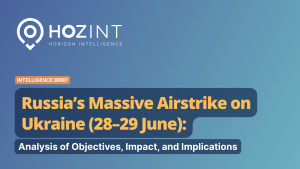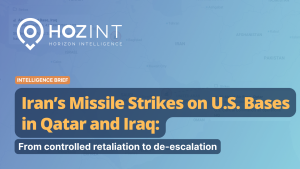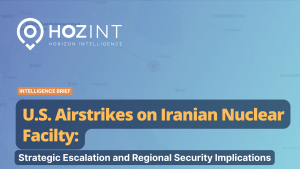On October 15, Sudanese Prime Minister Abdullah Hamdok appeared on national TV to address the unfolding political crisis between the civilian and military arms of the government. His speech has come as tensions in the country are rapidly escalating: Forces for Freedom and Change plan a demonstration against both arms of government in Khartoum on October 21, while pro-democracy protesters plan a counter-protest in support of the civilian arm of government.
Analysis
While tensions have escalated rapidly in the last few days, this crisis has been growing since the signing of the Sudanese Peace Agreement of August 31, 2020. Many tribal militants argue that the Peace Agreement negotiations did not consult them and that the agreement does not represent them. As such, they have escalated attacks against state infrastructure in 2021. The ongoing blockade of ports on Sudan’s eastern coastline by the Beja tribe has crippled fuel and medical supplies into the country. This has only added to the economic malaise that is affecting the wider population in Sudan; citizens are genuinely aggrieved by the perceived failures of the Hamdok government, and many argue that these failures betray the revolution which overthrew the last dictatorship in 2019.
On September 21, 2021, the government announced that it had foiled an attempted coup by sections of the military. Rather than diffusing tension, the disorganised attempt has only emboldened support for those calling for a seizure of power away from the civilian government. Sit-in protests at the Republican Palace by pro-military protesters entered their 3rd day on October 18. Students took time off school to join those calling for a military takeover. The army provides tacit support for such protests by facilitating protests without attempting to break them up; the Head of the Sovereignty Council, General Abdel Fattah al-Burhan, has openly called for the removal of the Hamdok government and the establishment of a full military government.
In his October 15 speech to the nation, Prime Minister Hamdok outlined his perception of the crisis: describing it as a fundamental rift between civilian and military arms of government, and also fundamental disagreements within the ranks of the civilian and military sides of the Sudanese Peace Agreement on what exactly the agreement means. It should not go unnoticed that the Sudanese Baath Party, who signed the Consensus Charter for the Unity of Freedom and Change against the government, has so far refused to participate in demonstrations against the government, concerned that it would facilitate a return to the military dictatorship of the past.
Forecast
In that October 15 speech, Prime Minister Hamdok presented a 10-point roadmap to navigate the country away from the crisis, calling for movement away from unilateral decision-making by both civilian and military arms of government, a constitutional obligation to dismantle the party-state of the previous regime in the interest of the nation, and creating a broad, legislative council representing all Sudanese people, among others. These high-ideas are unlikely to resonate with Sudanese protesters in Khartoum but will act as a siren call to groups like the Baath Party, who dislike the civilian government but are fearful of any military government.
The most immediate impact will come from the disruption of supplies resulting from the blockade of eastern ports. Hospitals are likely to run short on essential supplies and may not be able to cope with normal patient numbers. Fuel supply shortages will affect transport and logistics in not just Sudan, but in South Sudan as well, where fuel supplies are also increasingly strained. The Hamdok government does not yet appear to be willing to negotiate with tribal groups, so there is no end in sight for the blockade and resulting shortages. Civil unrest will continue over the coming weeks, and will likely become more violent as the economic situation deteriorates as a result of the port blockades and the continued impasse between both arms of government.
In the long term, groups with power in Sudan (civilian and military governments, tribal groups, business interests) will have to navigate a broken political system and negotiate with each other to establish which group can establish nationwide stability and legitimacy, and how they will handle the repercussions of the dominance of one faction or group.
By Connor Blandford, Risk Intelligence Analyst at Hozint – Horizon Intelligence.




